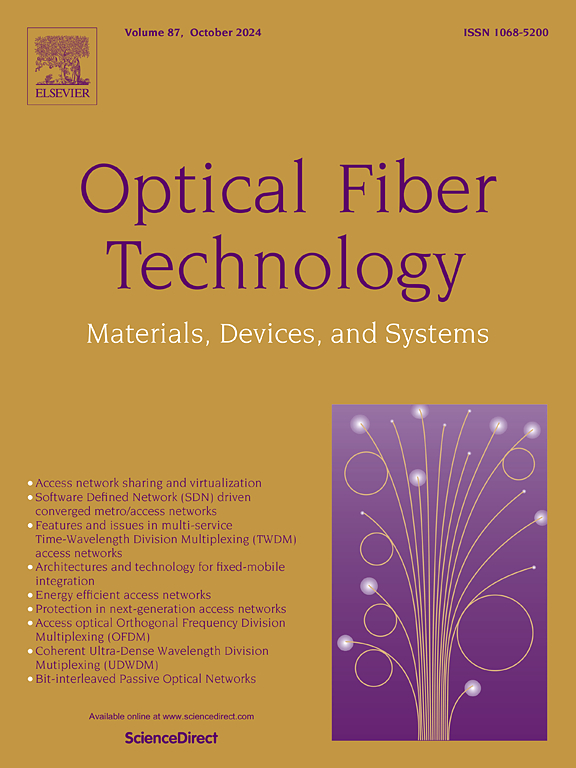Visible-Near infrared Ultra-Flat supercontinuum generation in long tapered photonic crystal fibers
IF 2.6
3区 计算机科学
Q2 ENGINEERING, ELECTRICAL & ELECTRONIC
引用次数: 0
Abstract
In this study, an all-fiber ultra-flat supercontinuum (SC) was developed using tapered photonic crystal fibers (TPCFs). We analyzed the effects of taper ratio and taper length on SC generation. The results indicate that appropriate taper length and taper ratio can effectively enhance the bandwidth and flatness of the SC. A silica TPCF with a transition region of approximately 24 m was fabricated. When the TPCF’s length was 27.55 m (with a transition region of 14.55 m), we achieved an ultra-flat SC with a 3 −dB bandwidth of 1245 nm (ranging from 743 to 1988 nm), using 1-ps pump pulses at 1064 nm. This SC exhibited a cut-in wavelength of 384 nm and a spectral coverage extending over 1.55 octaves. To the best of our knowledge, the 3 −dB bandwidth of this SC spectrum represents the widest level ever reported for a silica fiber-based SC laser. Furthermore, in subsequent research, we numerically generated a ultra-flat broadband SC at a 3 −dB level from 433 to 2728 nm, using 10-ps pump pulses at 1064 nm, almost covering the transmission band of silica. This study demonstrates a method that significantly enhances the flatness of the SC output.
求助全文
约1分钟内获得全文
求助全文
来源期刊

Optical Fiber Technology
工程技术-电信学
CiteScore
4.80
自引率
11.10%
发文量
327
审稿时长
63 days
期刊介绍:
Innovations in optical fiber technology are revolutionizing world communications. Newly developed fiber amplifiers allow for direct transmission of high-speed signals over transcontinental distances without the need for electronic regeneration. Optical fibers find new applications in data processing. The impact of fiber materials, devices, and systems on communications in the coming decades will create an abundance of primary literature and the need for up-to-date reviews.
Optical Fiber Technology: Materials, Devices, and Systems is a new cutting-edge journal designed to fill a need in this rapidly evolving field for speedy publication of regular length papers. Both theoretical and experimental papers on fiber materials, devices, and system performance evaluation and measurements are eligible, with emphasis on practical applications.
 求助内容:
求助内容: 应助结果提醒方式:
应助结果提醒方式:


